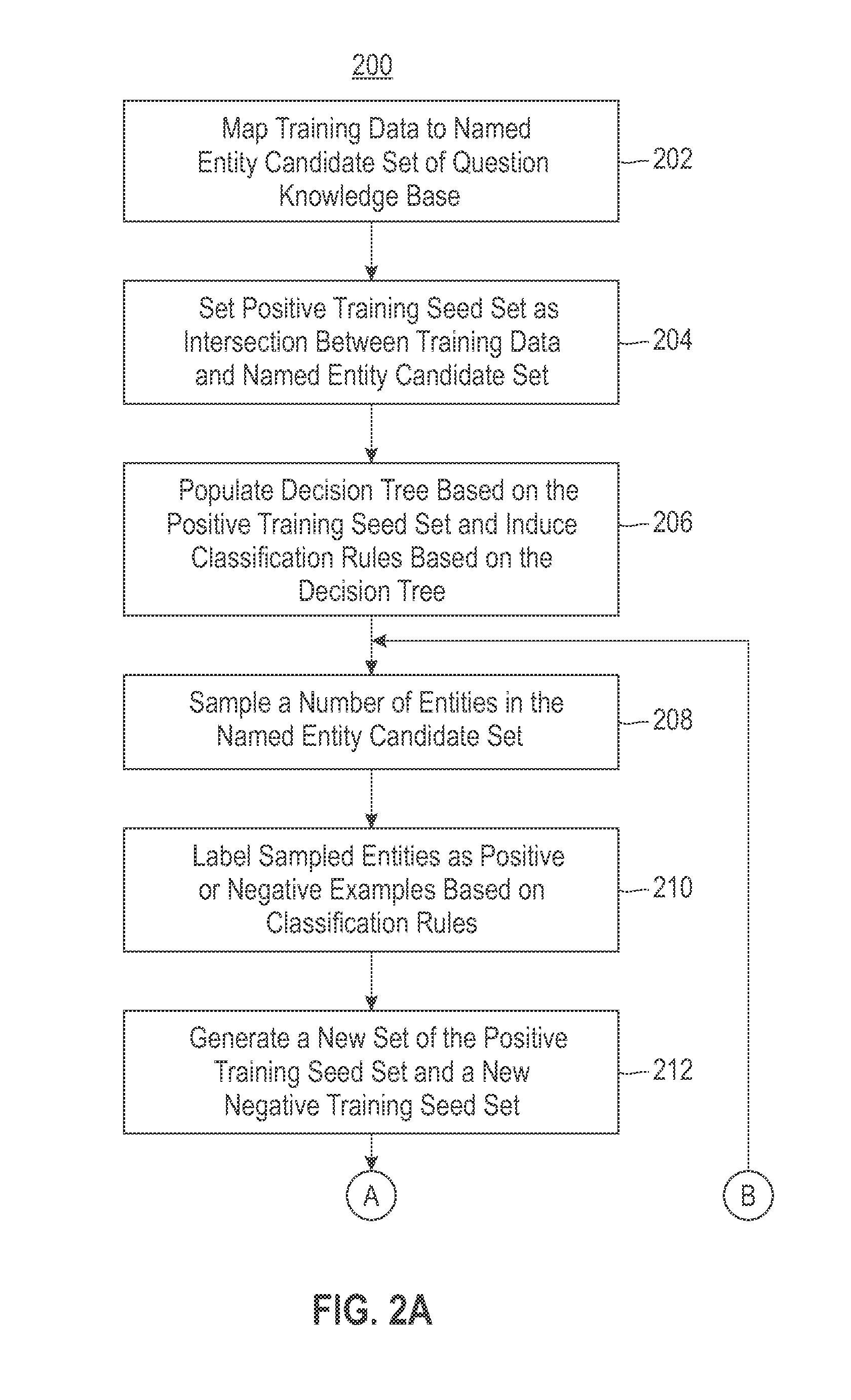Semi-supervised data integration model for named entity classification
a data integration model and named entity technology, applied in the field of information extraction, can solve the problems of unsupervised learning, deterioration of semi-supervised learning, and inability to scale up classification using handcrafted rules
- Summary
- Abstract
- Description
- Claims
- Application Information
AI Technical Summary
Benefits of technology
Problems solved by technology
Method used
Image
Examples
Embodiment Construction
[0015]Embodiments described herein are directed to providing a semi-supervised data integration model for named entity classification. Multiple data sources are leveraged as knowledge bases (i.e., repositories) for the selection of unlabeled data for a semi-supervised named entity classifier. Data in a question knowledge base can be classified into predefined entity types by integrating other data sources in a semi-supervised manner. The question knowledge base is a repository of entity information. As a pre-processing step, a small entity seed list that can be manipulated by hand as training data are selected along with other knowledge bases to classify the question knowledge base. The training data are mapped to the question knowledge base to form a positive training seed set. The mapping compares the training data to named entity candidates taken from the question knowledge base, thereby forming the positive training seed set in view of identified commonality between the training...
PUM
 Login to View More
Login to View More Abstract
Description
Claims
Application Information
 Login to View More
Login to View More - R&D
- Intellectual Property
- Life Sciences
- Materials
- Tech Scout
- Unparalleled Data Quality
- Higher Quality Content
- 60% Fewer Hallucinations
Browse by: Latest US Patents, China's latest patents, Technical Efficacy Thesaurus, Application Domain, Technology Topic, Popular Technical Reports.
© 2025 PatSnap. All rights reserved.Legal|Privacy policy|Modern Slavery Act Transparency Statement|Sitemap|About US| Contact US: help@patsnap.com



